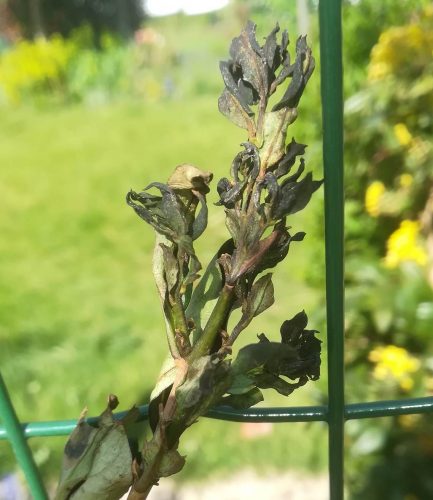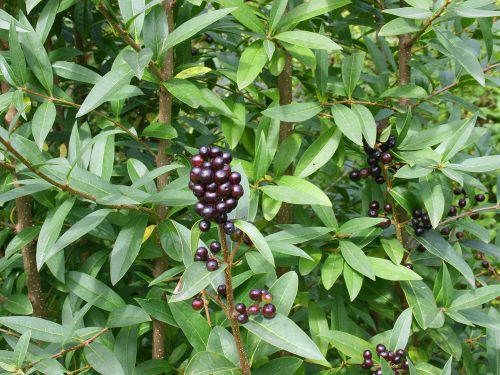Privet is evergreen and one of the best-known hedge plants.
You are viewing the mobile-adapted version of the page.
The one for tablets, laptop and desktop also provides general information, such as origin, toxicity and cultivation.
Leaf and berries (autumn) are poisonous to humans and animals. In horses, eating the leaves or berries causes colic. For birds, the berries are not toxic; they like to eat them.
Privet – (Ligustrum), a shrub in the olive family (Oleaceae). Privet is evergreen and one of the best-known hedge plants. Native to Japan, the garden privet (Ligustrum Ovalifolium) is most commonly used in hedges. Wild privet (Ligustrum vulgare) is native in Europa and is otherwise found on almost all continents. Privet is an invasive species in North America, Australia and New Zealand.
The difference between wild privet and garden privet is that the wild one grows faster and can get very tall. The shape of the leaf is also different. The garden privet has oval-shaped leaves; the leaves of the wild privet are lanceolate. Both wild privet and hedge privet are not fully evergreen.
Privet grows quickly and tolerates pruning well. Privet blooms with small, strongly fragrant, white flowers in spring. Because privet is an early bloomer, the blooms attract many insects.
As a rule, + five plants per meter are calculated for a full hedge. Privet tolerates air pollution.
Many birds nest in privet hedges. Birdss eat the black berries (fall). Privet is the host plant for the privet hawk moth (Sphinx ligustri); the caterpillars feed on the leaves.
A privet hedge maintains its shape well if the hedge is pruned three times a year. Mid-June is the best time for the first pruning, and late September for the last pruning. The second pruning can take place sometime in the summer depending on how far the hedge has grown. In a dry summer, a second pruning will not be necessary. By pruning the top of the hedge slightly narrower than the bottom, the lower parts of the hedge will also get enough light.
Privet has no special soil requirements.
Because privet roots superficially, privet is sensitive to herbicides and road salt.
Bugs
The leaves on the top of the privet become ragged and holes form: Common green capsid (Lygocoris pabulinus).
Holes in leaves scattered throughout the shrub: the larvae (caterpillars) of the Privet hawk moth (Sphinx ligustri).
The growing tips of the young leaves are eaten by green caterpillars: Winter moth (Operophtera brumata).
The soft parts of the white flowers are eaten: Eurasian bee beetle (Trichius fasciatus).
Fungi & diseases
The privet wilts: infestation by a soil fungus that disrupts the sap flow in the roots: Verticillium spp.
Brown and black spots develop on the leaves, with further infestation the leaves fall off: a variant of leaf spot disease (Cercospora).
Other

After planting, the leaves wither and fall off: an imbalance between the amount of leaves and roots, causing a water shortage. There are not enough roots to water all the leaves. Privet pruning back and watering.

